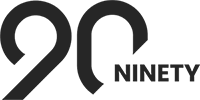What Gen Y and Gen Z Expect From a Work From Anywhere World
When it comes to recruiting, onboarding, seating and coaching teams, we want to understand the role that generational experience plays in a person's expectations in a Work From Anywhere World™ and how they view what they do, their colleagues and the future. In this article, we take an in-depth look at the expectations of millennials and Generation Z and the technologies that enable Work From Anywhere™ (WFA).
To thrive in a Work From Anywhere World™, teams must trust each other. So it feels good — and does us good — to get to know where team members are coming from, connect with the similarities and appreciate their unique strengths and talents.
Trust can be built through transparency in communication. It can also be enabled by intuitive tools like Ninety that help to define objectives, understand roles and accountability, and monitor progress toward organizational goals.
Today, teams are more multigenerational than ever. Five generations are helping us build great companies and work smarter for the first time in history. Although birth years vary, they are:
- Traditionalists — born 1927 to 1946
- Baby Boomers — born 1947 to 1964
- Generation X — born 1965 to 1980
- Millennials (Generation Y) — born 1981 to 2000
- Generation Z — born 2001 to 2020
Recent employee data calculates that nearly half of today's full-time workers in the U.S. are members of Generation Y and Generation Z. It's predicted that by 2025, millennials will make up 75% of the global workforce, which makes sense given older generations are moving on to other journeys at this point in their lives.
It also makes sense that the role of generational experience is on leaders' minds right now, especially when it comes to recruiting, onboarding, seating and coaching teams. We want to understand the demographics, their expectations, and how they view their work, colleagues, and the future.
Let's take a closer look at Gen Y and Z, who comprise 46% of today's workforce.
Core Characteristics Gen Y and Gen Z Share
Millennials and Gen Z grew up with technology.
Millennials are considered digital pioneers — the first generation to be influenced by an explosion of technological advances and the birth of social media. But Gen Z is considered digital natives; they've never known a world without digital devices and social media.
For millennials and Gen Z, diversity is normal.
America's demographics continue to shift. Gen Z's life experience is seated in racial diversity, multigenerational families, single-parent or multi-racial households and a relaxing of traditional views about sexual orientation and religion. Both generations value our differences and open communication among us all.
Millennials and Gen Z are inspired to create value.
Although millennials may have grown up during an economic boom, both Gen Y and Gen Z are mindful that the stresses of a struggling economy can be alleviated with a good understanding of the math of work and creating value, whether in their personal lives or their organizations.
What Matters Most to Gen Y and Gen Z
What millennials and Gen Z are looking for in a Work From Anywhere World is pretty much what matters most to all generations, perhaps with different emphasis. In this transition to more holistic leadership, what matters most to teams are the elements of well-being that will help us thrive: a sense of self, belonging, security, balance and strength. For Gen Y and Gen Z, here are their top four.
-
They want an organization to care about the well-being of team members.
If the people in a company aren't physically, mentally and emotionally healthy, the company isn't healthy either.
-
They want an organization that's diverse and inclusive.
Diversity, equity and inclusion (DEI) is an essential matter that speaks to generational identity.
-
They want ethical leadership.
People can collaborate beautifully, knowing that everyone is being honest with each other.
-
They want leadership that is open and transparent.
People want facts, data and third-party validation to feel confident in leadership. Case in point: Employee engagement in the U.S. rose during the COVID-19 pandemic due in part to increased communication and town hall-style meetings initiated by organization leadership.
How Ninety Helps Gen Y and Gen Z Thrive in Remote and Hybrid Workplaces
Millennial and Gen Z teams are accustomed to using technology in their everyday lives, and they expect the same in a Work From Anywhere World. If a core process can be made better through a tech solution, they expect their organization to make it so.
The technology of the Ninety® platform addresses the needs of Gen Y and Gen Z team members and our multigenerational teams as a whole. Here's how:
Well-being
- The Ninety platform helps us put into practice the need of every human — to be in a role that emphasizes our strengths, to be cared for as a person, to seek opportunity, and to be acknowledged for our triumphs.
- Ninety tools help us recognize how our strengths expand by being placed in roles where we will thrive.
- Gen Y and Gen Z expect mobile integration to work from anywhere and are used to communicating on platforms like social media, instant messaging apps, video chat, and email. The Ninety platform is mobile with an extraordinarily intuitive user interface and experience that help us work from our unique strengths and talents while keeping everyone connected.
Transparent Leadership
Leading with transparency means keeping everyone in the loop, sharing the good and the bad appropriately and welcoming honest team feedback. Ninety strengthens transparent leadership through weekly meetings that provide multiple opportunities to give praise and recognition for a job well done, such as:
- Scorecard reviews
- Customer and employee headlines
- To-Dos completed
- Discussing an Issue, then finding a workable solution
Diversity, Equity and Inclusion
Ninety's ever-expanding collection of tools helps the entire organization integrate data, opportunities, issues, processes and people to achieve goals and metrics while accelerating the company's vision.
Action Steps
Part of transitioning to more holistic leadership is understanding how to meet the needs of today's workers. Here are three suggestions to get started.
-
Start conversations that address the elements of well-being in company culture.
The elements of well-being that help teams thrive — a sense of self, belonging, security, balance and strength — are meaningful and relevant for all generations of team members including Gen Y and Gen Z. Companies that connect with and engage us wholeheartedly produce better outcomes like employee retention, customer delight, improved productivity, and value creation.
-
Coach leaders to communicate and deliver on the organization's promises.
People experience what their companies are all about through their leaders. When we understand the value of caring about team members as people and set expectations of ethical and inclusive behavior, everyone benefits.
-
Review hiring strategies and integrate holistic leadership themes.
Ask these questions:
- Do we emphasize employee well-being in recruitment messaging?
- Does our onboarding program address ethics in a meaningful way?
- How does our system for advancement and promotion address diversity and inclusion?
Want a platform that connects teams and helps all generations work smarter? Sign up for a free trial with access to all Ninety.io functions, features and support. We guarantee that you'll love it.


.png)


